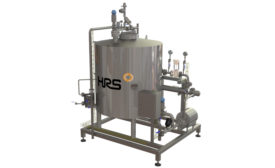Dairy Processing and Equipment
Through its commitment to providing milk for school lunches, food banks and more, the industry is helping to end hunger.
Read More
Processor of the year Danone North America is a purpose-driven innovator
Our Processor of the Year is a standout not only in new product development, but also in social and environmental responsibility.
November 23, 2021
Top dairy company execs discuss the state of the dairy industry
Despite challenges, there are plenty of reasons for optimism.
October 27, 2021
Beat the odds in new dairy product development
By following some best practices, dairy processors could create new products that connect with consumers and bolster the bottom line.
October 8, 2021
HP Hood keeps a fresh approach as it celebrates 175 years
The company continues to innovate in order to weather changing marketplace conditions and stay relevant with the contemporary consumer.
October 4, 2021
Automation helps dairy processors optimize operations
The automation design process should begin before facility construction even begins.
September 30, 2021
Heat exchangers offer big processing paybacks
Selecting the proper heat exchanger and keeping the system operating efficiently can be challenging but fruitful.
September 29, 2021
New meets old at HP Hood’s ice cream plant
HP Hood uses the latest in technology to flavor its ice cream the old-fashioned way at its Suffield, Conn., plant.
September 28, 2021
Stay ahead of the curve. Unlock a dose of cutting-edge insights.
Receive our premium content directly to your inbox.
SIGN-UP TODAYCopyright ©2024. All Rights Reserved BNP Media.
Design, CMS, Hosting & Web Development :: ePublishing













